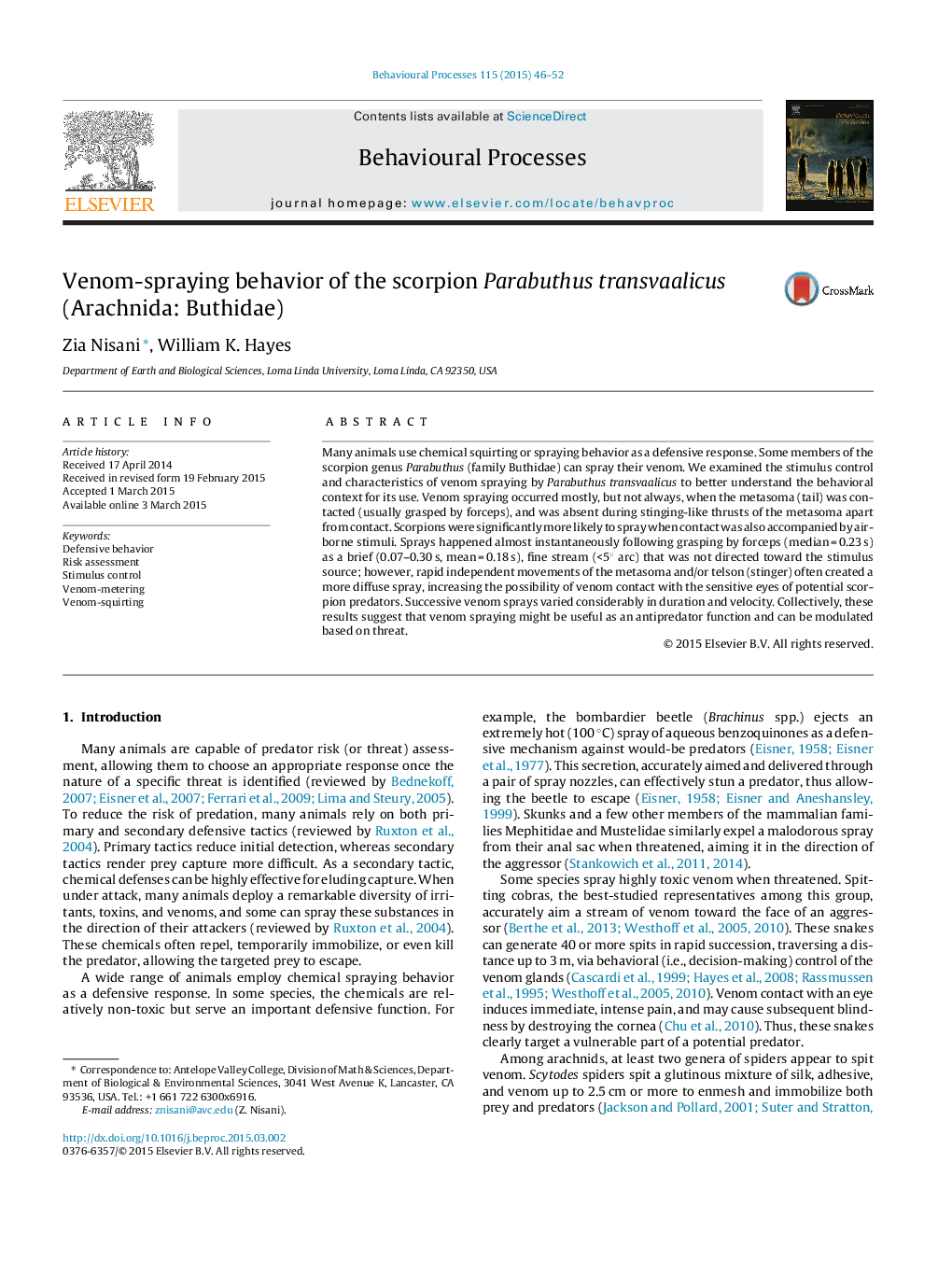| Article ID | Journal | Published Year | Pages | File Type |
|---|---|---|---|---|
| 2426589 | Behavioural Processes | 2015 | 7 Pages |
•Venom spraying by Parabuthus transvaalicus is most likely under their behavioral control.•Scorpions are likely to spray when contact is accompanied by airborne stimuli.•The spraying pattern increases the possibility of venom contact with a predator’s eyes.•Venom spraying likely serves an antipredator function that is modulated by level of threat.
Many animals use chemical squirting or spraying behavior as a defensive response. Some members of the scorpion genus Parabuthus (family Buthidae) can spray their venom. We examined the stimulus control and characteristics of venom spraying by Parabuthus transvaalicus to better understand the behavioral context for its use. Venom spraying occurred mostly, but not always, when the metasoma (tail) was contacted (usually grasped by forceps), and was absent during stinging-like thrusts of the metasoma apart from contact. Scorpions were significantly more likely to spray when contact was also accompanied by airborne stimuli. Sprays happened almost instantaneously following grasping by forceps (median = 0.23 s) as a brief (0.07–0.30 s, mean = 0.18 s), fine stream (<5° arc) that was not directed toward the stimulus source; however, rapid independent movements of the metasoma and/or telson (stinger) often created a more diffuse spray, increasing the possibility of venom contact with the sensitive eyes of potential scorpion predators. Successive venom sprays varied considerably in duration and velocity. Collectively, these results suggest that venom spraying might be useful as an antipredator function and can be modulated based on threat.
